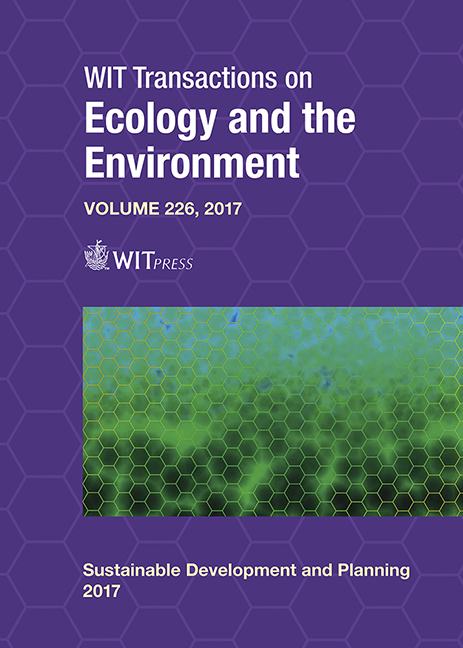THE USE OF NATURAL FIBER AS A BARRIER TO GARBAGE IN AMAZON URBAN RIVERS
Price
Free (open access)
Transaction
Volume
226
Pages
10
Page Range
459 - 468
Published
2017
Size
516 kb
Paper DOI
10.2495/SDP170401
Copyright
WIT Press
Author(s)
LUCAS MATHEUS S. P. RODRIGUES, JUSSARA SOCORRO CURY MACIEL
Abstract
The main cities in North Brazil, located in the Amazon rainforest, have sanitation and flooding problems caused by accumulating waste and garbage, particularly in poor neighborhoods. This includes Manaus, the capital Amazonas, which has recently had obstruction problems caused by accumulating waste. Nowadays, dredging waste collection systems have annual costs of around $11 million Brazilian Reais. This kind of garbage collection degrades natural protection provided by vegetation in drainage beds and serves as a stopgap measure to reduce local pollution of rivers. The city of Rio de Janeiro created an initiative to clean the Guanabara Bay in time for the 2016 Olympic Games, named “Plano Guanabara Limpa” (Clean Guanabara Plan): it used barriers installed before the river’s mouths, collecting 300 tons of different garbage per month. This research aims to analyze the use of natural fiber jute on woven networks, installed in the cross channel to prevent the flow of waste to the Negro river. The proposed garbage collection system is sustainable, biodegradable and low-cost, using local raw materials that can be found and produced in the Amazon region, promoting planting, production, and manufacture by riverside communities. Based on such, this study will address the inclusion of natural fiber barrier networks, resulting in better economy and sustainability to the region. This study is based on the conceptual approach, application, and viability of literature, as well as research in other implementation models of garbage collection to propose a prototype design, using mapping satellite images and local data collected in the natural drainage of Manaus. The research proposes a preliminary model that can be adapted to any urban channel of the Amazon rainforest. Wrong solid waste disposal in the city drainage that flows in the Negro river causes problems that the local government and society currently deal with. The solution presented combined public policy awareness and new alternatives for environmental management, enables the natural barrier garbage system, blocking the passage of discarded materials to the river, offering points of selective waste collection and scroll recycling.
Keywords
pollution control, natural fiber, Amazon urban rivers, natural drainage





